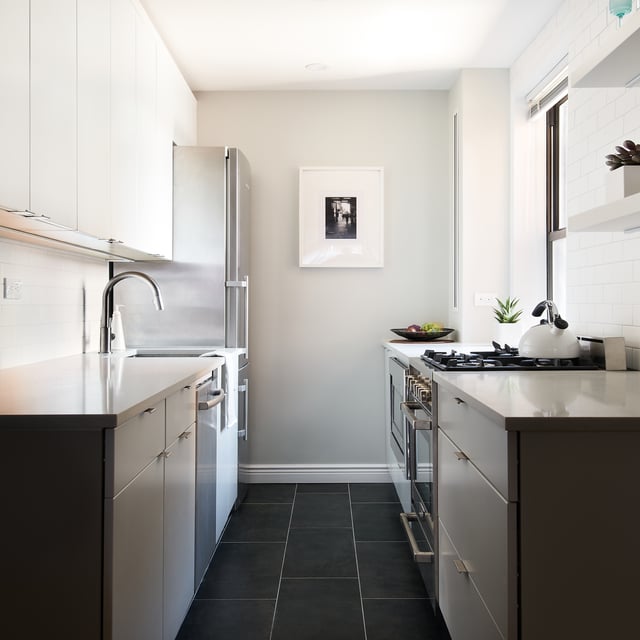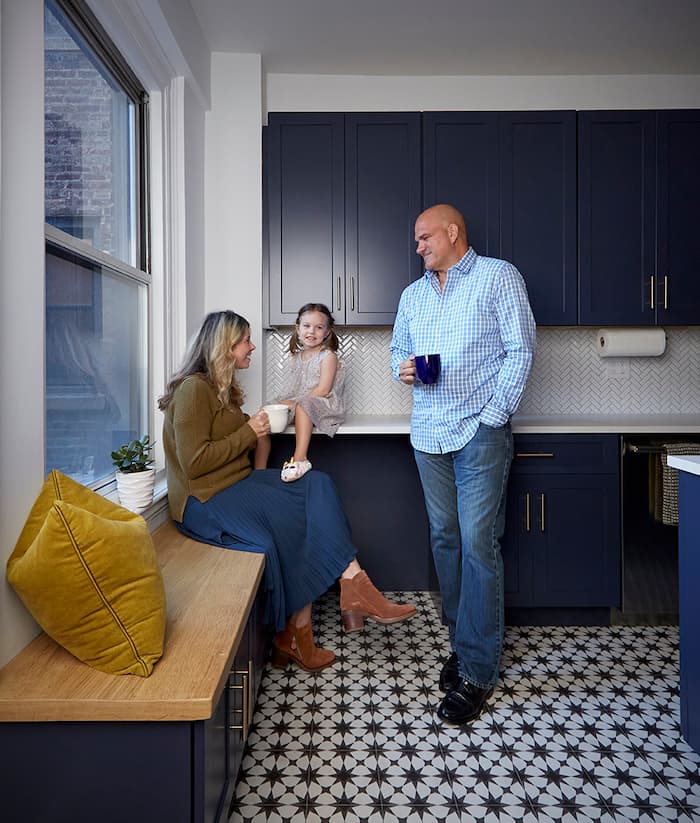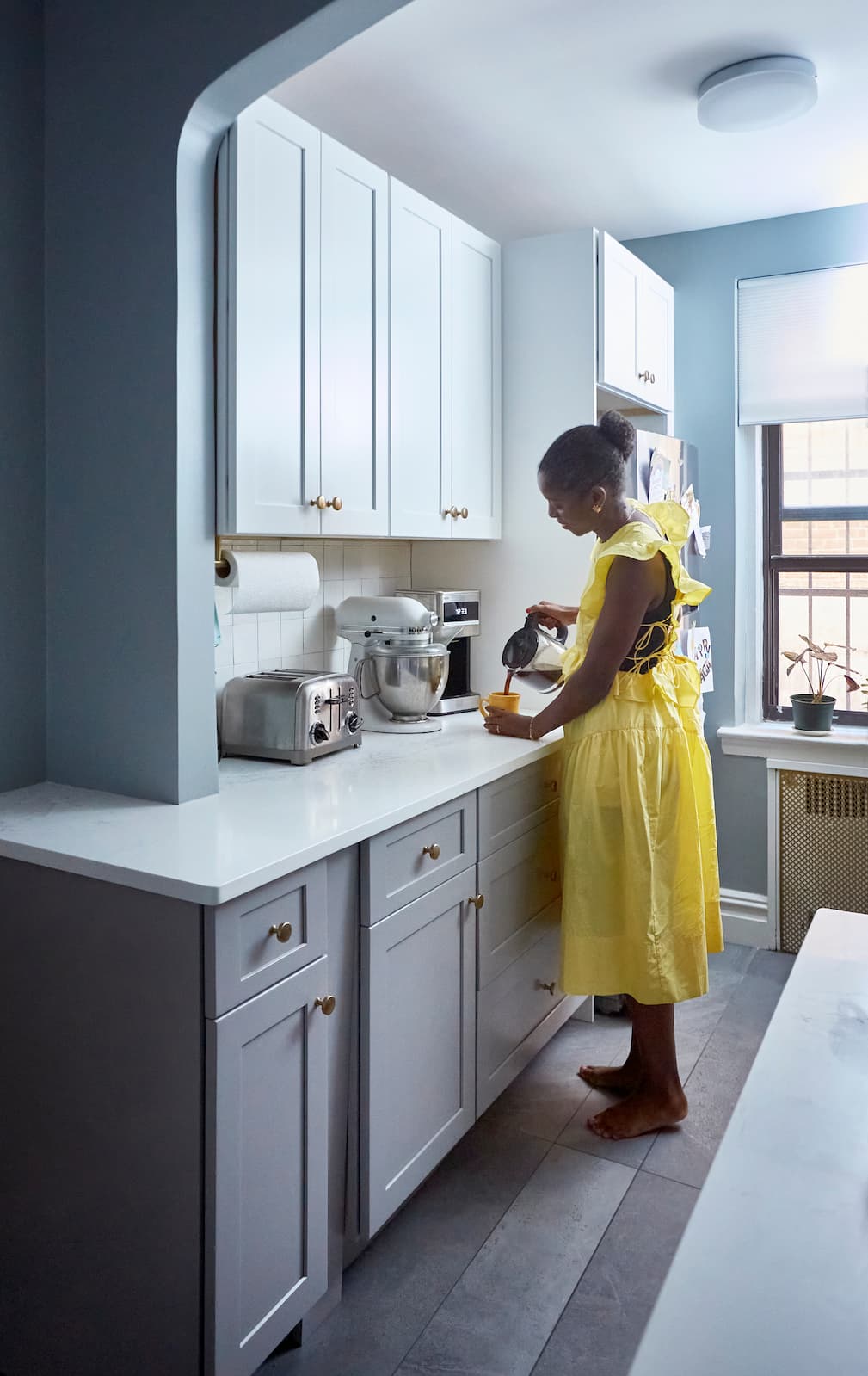
Kitchen
Ideas for Transitional Kitchen Design
12.23.2025
Our New Year savings event is here: Get up to $6,500 off your project today (terms apply).

Budget your upcoming kitchen remodel with help from Block

In This Article
A kitchen remodel is a major project, and the price tag can be just as substantial as the transformation. Before you start, it’s critical to understand exactly where your money will go. This breakdown of kitchen remodel costs covers every major category—cosmetic updates, appliances, structural changes, and labor—so you can plan with precision and avoid surprises.
Cosmetic updates are often the first place homeowners focus their attention. These changes can dramatically improve the look and feel of your kitchen without altering its footprint, but costs can swing widely based on choices in materials, finishes, and installation methods.
Cabinets are typically the single largest expense in a kitchen remodel, accounting for 25–35% of the total budget. The price range is broad: stock cabinets from big-box stores start around $100–$300 per linear foot, while semi-custom options run $200–$650 per linear foot. Custom cabinetry, built to your exact specifications, can exceed $1,000 per linear foot.
Several factors influence the final cost:
Countertop prices depend on both material and installation complexity. Laminate is the most budget-friendly, starting at $20–$60 per square foot installed. Quartz, a mid-range material, costs $40 - $100. Granite and other high-end materials can cost anywhere from $70–$230 per square foot.
Key cost drivers include:
For greater budgeting insight, check out How Much Does Replacing Kitchen Countertops Cost.
Flooring costs vary by material, installation method, and the condition of your subfloor. Vinyl and laminate flooring typically run $4-$6 per square foot installed, making them popular for budget-conscious remodels. Tile ranges from $11–$29 per square foot, with porcelain and natural stone at the higher end. Hardwood can cost $8–$25 per square foot, depending on species, finish, and whether it’s prefinished or site-finished.
Additional factors:
For deeper insight, read How Much Does It Cost to Replace a Kitchen Floor.
A new backsplash can cost anywhere from $10–$90 per square foot installed, depending on the tile material and pattern complexity. Simple ceramic subway tile is on the lower end, while glass, marble, or mosaic tiles increase both material and labor costs. For more insights, read Kitchen Backsplash Costs—Installation, Materials & More.
Considerations that affect price:
Lighting upgrades can range from $200 for basic fixture swaps to $2,000 or more for a full lighting plan with recessed, under-cabinet, and pendant fixtures.
Cost factors include:
Transparent Pricing You Can Trust

Appliances are a major line item in any kitchen remodel, and their prices can vary dramatically based on features, size, and brand. To help you plan your budget with confidence, here’s a breakdown of costs for the most common kitchen appliances, along with the factors that influence where your investment will land.
Structural changes can dramatically alter the function and flow of your kitchen, but they also come with higher costs and more variables than cosmetic updates.
Converting a full wall into a half wall or breakfast bar typically costs $1,500–$4,000. The price depends on whether the wall is load-bearing, which requires additional engineering and support. Costs also rise if electrical wiring, plumbing, or HVAC runs through the wall and needs to be rerouted. Finishing touches like custom millwork, countertop overhangs, or built-in shelving add to the total.
Replacing a kitchen window ranges from $800–$2,500 per window. Standard-size, double-hung windows are at the lower end, while larger or specialty windows—such as garden, bay, or casement styles—cost more. If the new window requires resizing the opening or reframing the wall, expect additional labor and material charges. Energy-efficient glass and custom finishes also increase the price.
Expanding your kitchen into an adjacent room or adding square footage with a bump-out addition can cost $10,000–$30,000 or more. The final price depends on the size of the expansion, the need for new foundation work, and the complexity of integrating new plumbing, electrical, and HVAC systems. Structural changes to exterior walls and roofing will also drive up costs.
Relocating plumbing or gas lines for sinks, dishwashers, or ranges typically costs $1,000–$5,000. The distance of the move, accessibility of existing lines, and the need to open up floors or walls all affect the final price. In older homes, bringing plumbing or gas up to current code can add further expense.
Upgrading your kitchen’s electrical service, such as adding a new subpanel or rewiring for modern appliances, usually costs $2,000–$6,000. This is often necessary in older homes that lack sufficient amperage or grounded outlets. The scope of work may include new circuits, GFCI outlets, and dedicated lines for high-powered appliances.
Installing a new door or removing an existing one can cost $500–$2,000. The price depends on whether the change is non-structural (simply swapping a door) or requires reframing and finishing the opening. Exterior doors, sliding glass doors, or custom options will increase both material and labor cost.
Turn your renovation vision into reality
Get matched with trusted contractors and start your renovation today!
Find a Contractor
Gutting a kitchen involves removing all existing finishes, fixtures, and sometimes even interior walls, leaving only the bare structure. This approach is often necessary when you need to address major water damage, outdated wiring or plumbing, or when a complete redesign is planned. Below is a cost breakdown of the main components involved in gutting a kitchen, along with context for each line item so you can understand where your investment goes and what to expect during this extensive process.
Labor is a significant portion of any kitchen renovation budget, often accounting for 20–35% of the total project cost. The exact amount depends on the complexity of your remodel, the region where you live, and the experience level of the professionals you hire. General contractors typically charge a project management fee or markup, while specialty trades—such as electricians, plumbers, tile setters, and carpenters—bill separately, usually at hourly or per-project rates.
For most kitchen renovations, expect to pay $50–$150 per hour for skilled trades. More complex work, such as custom cabinetry installation or intricate tile work, may command higher rates. If your project involves structural changes, moving plumbing or gas lines, or upgrading electrical service, labor costs will rise accordingly due to the need for licensed specialists and additional inspections.It’s important to get detailed, written estimates that break down labor charges by task. This transparency helps you compare bids, understand what’s included, and avoid unexpected costs as the project progresses. Choosing a reputable, vetted contractor with a clear contract and communication process is the best way to keep labor costs predictable and your renovation on track.
Compare Proposals with Ease

Planning a kitchen remodel is a major commitment, and understanding costs from the start is essential. Block Renovation is built to give homeowners clarity and control at every step, starting with a transparent cost breakdown before any work begins.
Our contractor vetting system ensures that only licensed, experienced professionals are matched to your project. Every contractor in our network has passed a rigorous screening process, so you can move forward with confidence.
Transparency is at the core of our process. You’ll receive a detailed project scope, outlining every line item and material, so there are no surprises. Each scope is reviewed with a dedicated Project Planner, who will answer your questions and help you understand how each decision affects your budget.
Block’s progress-based payment system adds another layer of protection. Payments are tied to completed milestones, not arbitrary dates, so you only pay for work that’s finished and approved. This approach keeps your project on track and ensures your investment is protected from start to finish.With Block Renovation, you get a clear, upfront view of your kitchen remodeling costs—plus the support and expertise to make every dollar count.
Remodel with confidence through Block

Connect to vetted local contractors
We only work with top-tier, thoroughly vetted contractors

Get expert guidance
Our project planners offer expert advice, scope review, and ongoing support as needed

Enjoy peace of mind throughout your renovation
Secure payment system puts you in control and protects your remodel

Written by Block Renovation

Renovate confidently with Block
Easily compare quotes from top quality contractors, and get peace of mind with warranty & price protections.
Thousands of homeowners have renovated with Block

4.5 Stars (100+)

4.7 Stars (100+)

4.5 Stars (75+)

Kitchen
Ideas for Transitional Kitchen Design
12.23.2025

Kitchen
Modern Rustic Kitchen Designs & Remodels
12.18.2025

Kitchen
Japandi-Style Ideas to Bring to Your Own Small Kitchen Design
12.16.2025

Kitchen
Scandinavian Kitchen Design: Stylish Minimalism
12.16.2025

Kitchen
Non-Tile Kitchen Backsplashes - Alternative Ideas
12.06.2025
Renovate confidently